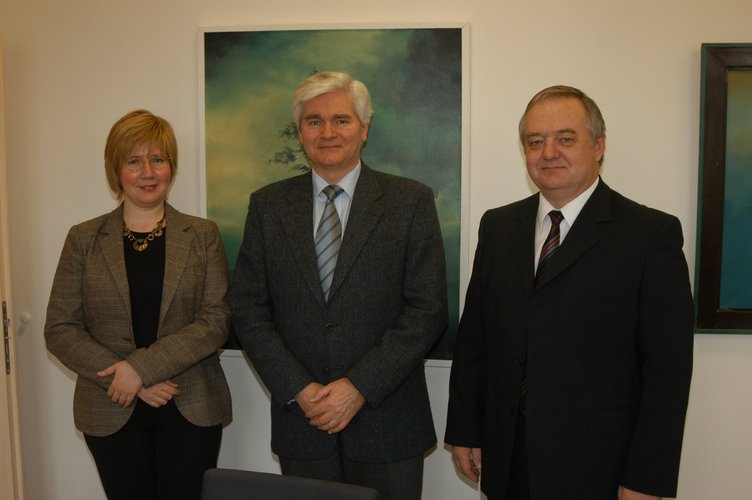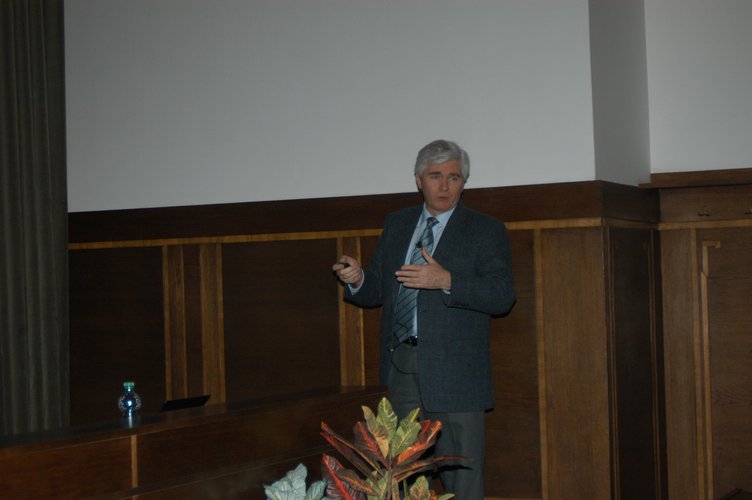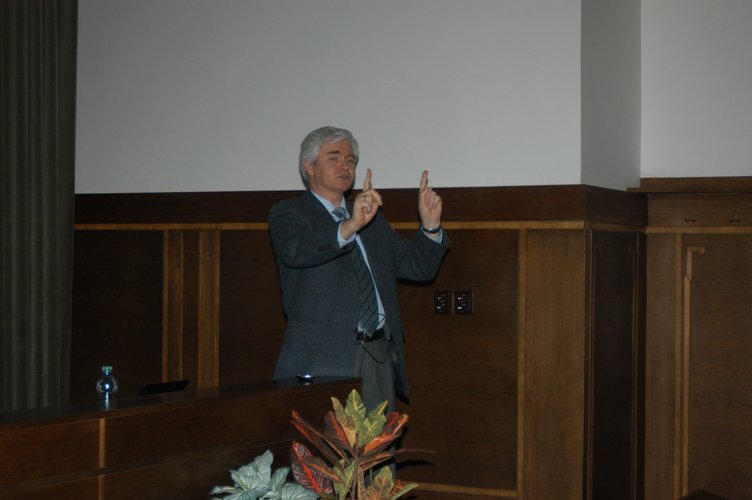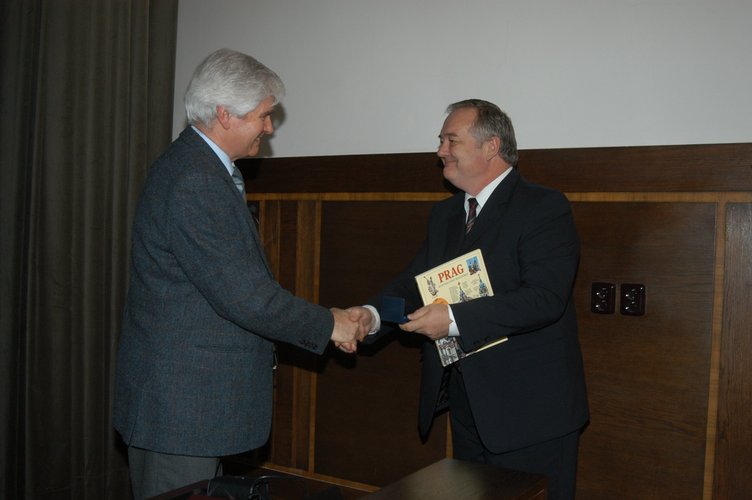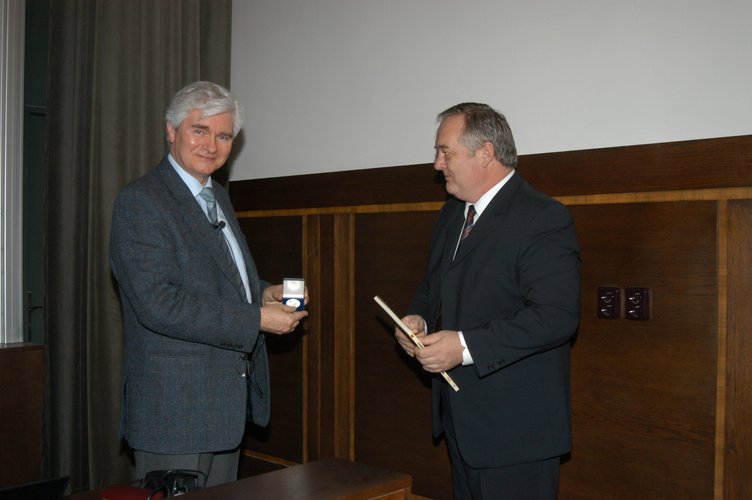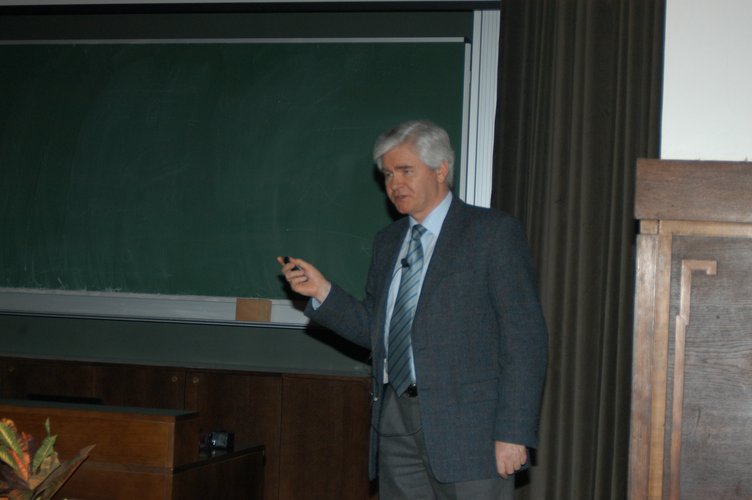
Prof. Wolfgang Lubitz (MPI für Bioanorganische Chemie, Mülheim, Německo)
Light-Induced Water Splitting and Hydrogen Production in Nature: Structure and Function of the Enzymes Wateroxidase and Hydrogenase
Abstrakt
Hydrogen is considered the fuel of the future if produced from sun light-driven water splitting. A hydrogen economy based on genetically modified organisms, immobilized enzymes or biomimetic synthetic catalysts requires a profound knowledge of the structure and function of the respective enzymes in nature. Light-induced water splitting and oxygen release (2H2O → 4H+ + 4e- + O2↑) is performed by a tetranuclear manganese cluster located in photosystem (PS) II of all organisms performing oxygenic photosynthesis. A reliable model for the spatial arrangement of the cluster has recently been obtained from X-ray and XAS data of PS II single crystals (1). Details of the electronic structure of the cluster in its various states Sn (n = 0, …4) of the enzymatic cycle are available from spectroscopic experiments, e.g. from EPR and 55Mn ENDOR (electron-nuclear double resonance), which can be performed on the paramagnetic states of the cluster (2). Based on such data and additional experiments on water binding and oxygen release a catalytic mechanism is proposed.
The protons generated by PS II are used in various ways; one possible is the conversion to molecular hydrogen by the enzyme hydrogenase (2H+ + 2e- ⇌ H2), which is indeed found in green algae and cyanobacteria. [NiFe] and [FeFe] hydrogenases are the two main classes of this enzyme. They contain bridged binuclear transition metal cores in their active sites which are tuned by a special ligand environment to fulfil the task of efficient conversion of protons to hydrogen – or vice versa – via a heterolytic mechanism. The ligand sphere is characterized by thiolate ligands as well as an unusual coordination of the iron by small diatomic molecules (CN- and CO). The crystallization of representatives of both types of enzymes (4) has provides the spatial structure of the hydrogenases for the oxidized and reduced form. The various intermediate states in the catalytic cycle are studied by spectroscopic techniques; here results from FTIR and EPR (5) are presented. The activation of the enzyme, the inhibition by CO, the sensitivity to molecular oxygen as well as substrate binding and product formation have been investigated. This led to proposals for the catalytic cycles of the [NiFe] and the [FeFe] hydrogenases.
Zdroje
- Yano, J. et al. Science 2006, 314, 821.
- Kulik, L.; Epel, B.; Lubitz, W.; Messinger, J. J. Am. Chem. Soc. 2007, 129, 13421.
- Su, J.-H.; Lubitz, W.; Messinger, J. J. Am. Chem. Soc. 2008, 130, 786.
- Fontecilla-Camps, J.C.; Volbeda, A.; Cavazza, C.; Nicolet, Y. Chem. Rev. 2007, 107, 4273.
- Lubitz, W.; Reijerse, E.; van Gastel, M. Chem. Rev. 2007, 107, 4331.
